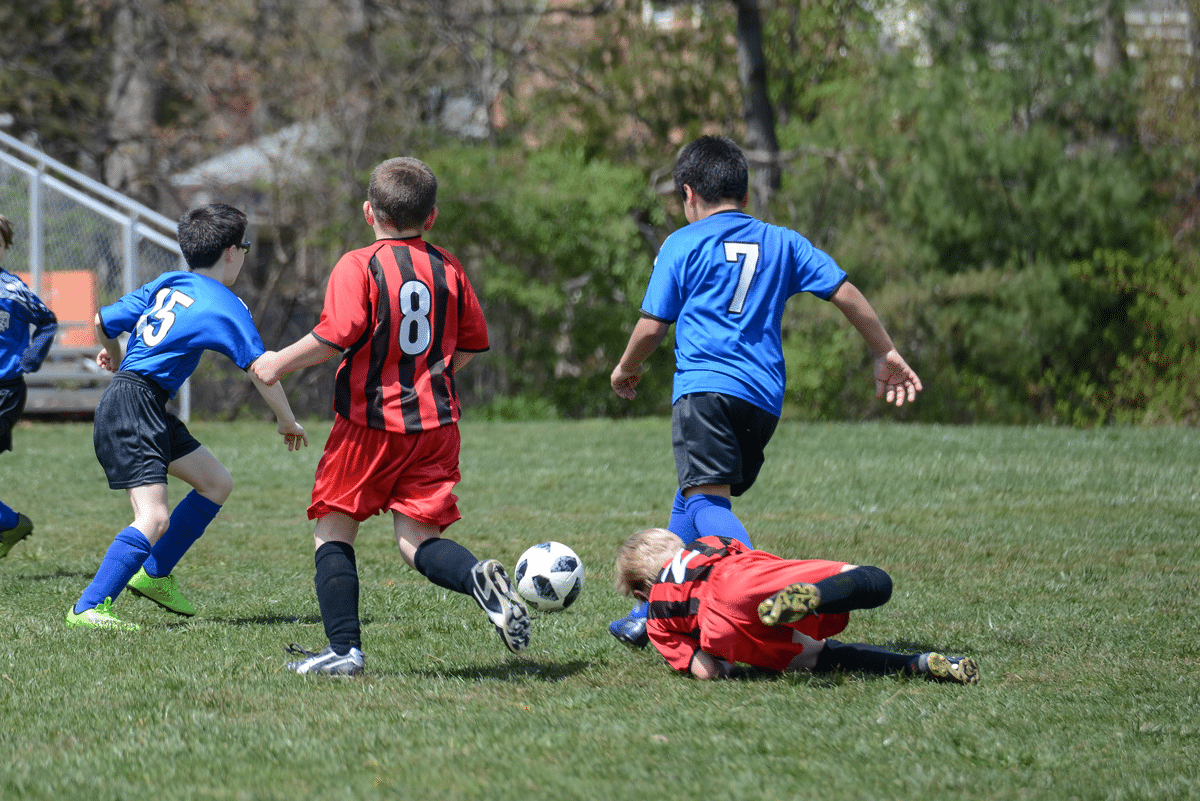
Each year, around 250,000 children in the U.S. are taken to emergency departments due to sports-related traumatic brain injury-concussions (TBI).
Contact Sports and Hearing Loss in Athletes
Contact sports, especially those with an increased risk of impacts like football and lacrosse, put athletes, particularly young ones, at higher risk of head trauma and concussions. These injuries can lead to severe hearing issues and even hearing loss by damaging the inner and middle parts of the ear.
In high-contact sports, athletes often suffer from various injuries, including the “cauliflower ear.” This injury affects the outer ear and damages the ear cartilage when a great force is applied. Cauliflower ear can lead to blood flow blockage and visible blood clots that can cause temporary or permanent hearing loss.
Head trauma caused by sudden impact can also damage the auditory pathway, resulting in hearing loss. Even mild concussions can cause irreversible damage to the delicate auditory pathways leading to the brain.
Some of these irreversible injuries include:
- A ruptured eardrum
- Damage to the small bones of the middle ear
- Damage to the tissues and membranes of the inner ear
- Disruption of blood flow to the cochlear nerve
- Damage to the hair cells of the inner ear

Effects of hearing loss
Dealing with hearing loss can be a challenge as it can cause stress, social isolation and reduced sports performance for athletes. This is due to the use of hearing aids, difficulty in communicating with others, and the inability to hear important sounds that help in making judgments, thereby increasing the risks to a person’s safety.
Moreover, hearing loss can lead to a reduced quality of life. People who suffer from hearing loss often experience distress, low self-esteem, and depression, and may even face difficulties in socializing and working. Therefore, it is important to seek medical intervention if you suspect that you or someone you know is experiencing hearing loss.
Some of the common symptoms that indicate hearing loss include difficulty in understanding conversations, having to turn up the volume of the TV or radio, and frequently asking people to repeat themselves.
- Difficulty comprehending words when people are speaking
- Asking people to repeat what they say
- Raising the volume of your music player substantially
- Talking loudly
- Tinnitus or ringing/buzzing sound in your ear
- Loss of balance
- Discharge from your ears
- Intense pain

What you should do
Athletes, especially young ones, are at a higher risk of hearing loss during contact sports. Therefore, it is necessary to protect athletes from such risks. It’s advisable to consult an ear doctor to discuss the risks and the best way to protect athletes from potentially serious injury.
It’s important to start with a baseline hearing test to determine your hearing range. By comparing your follow-up hearing tests to the baseline test, you can quickly identify any changes in your hearing. Treating your hearing loss as soon as possible makes it easier to adjust to hearing devices and improves your overall hearing. Additionally, early treatment reduces the risk of future hearing loss and helps maintain good hearing health.
